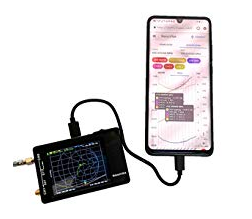AC1300 PCIe Wi-Fi Card for desktop802. 11AC - The next generation of TP-Link's Archer T6E supports the next generation Wi-Fi standard - IEEE 802. 11AC,
offering transfer rates that are 3 times faster than wireless N speeds.
Easily upgrade your Desktop system by simply slotting the Wi-Fi adapter into an
available PCIe slot. ac1300 – selectable Dual Band speeds 867/400mbpsthe Archer T6E Provides high-speed Wi-Fi of up to 867Mbps over 5GHz, perfect for
HD video streaming and lag-free online gaming.
Additionally, the 2. 4GHz 400Mbps Wi-Fi band is ideal for standard network/ Internet usage such as web surfing. heat sink for better stability heat sink helps to dissipate heat generated by the adapter, which in turn increases performance and improves stability.
Additionally, lower temperatures ensure an increased adapter lifespan. external antennas external antennas for easy alignment to achieve the best signal. Check it Out !
High-Speed Dual Band for Better Wi-Fi Experience
Archer T6E supports the newest Wi-Fi standard - IEEE 802.11ac, offering transfer rates that are 3 times faster than wireless N speeds. The Archer T6E provides high-speed Wi-Fi of up to 867 Mbps over 5GHz, 400 Mbps over 2.4GHz. It’s perfect for HD video streaming, lag-free online gaming and web surfing. Up To 1300 MBPS.
Advanced Heat Sink for Better Stability
The advanced Heat Sink helps to dissipate heat generated by the adapter, which in turn increases performance and improves stability. What’s more, lower temperatures ensure an increased adapter lifespan.
External Advanced Antennas for Better Coverage
Two external antennas for easy alignment to achieve the best signal. The incorporation of advanced antennas and wireless technology allows you to enjoy stable connections and incredible coverage.
Easy Setup with Advanced Security
Archer T6E is compatible with Windows 10 / 8.1 / 8 / 7 / XP. And also support WPA/WPA2 encryption standards which ensure your wireless connection be safe from intruders.
















